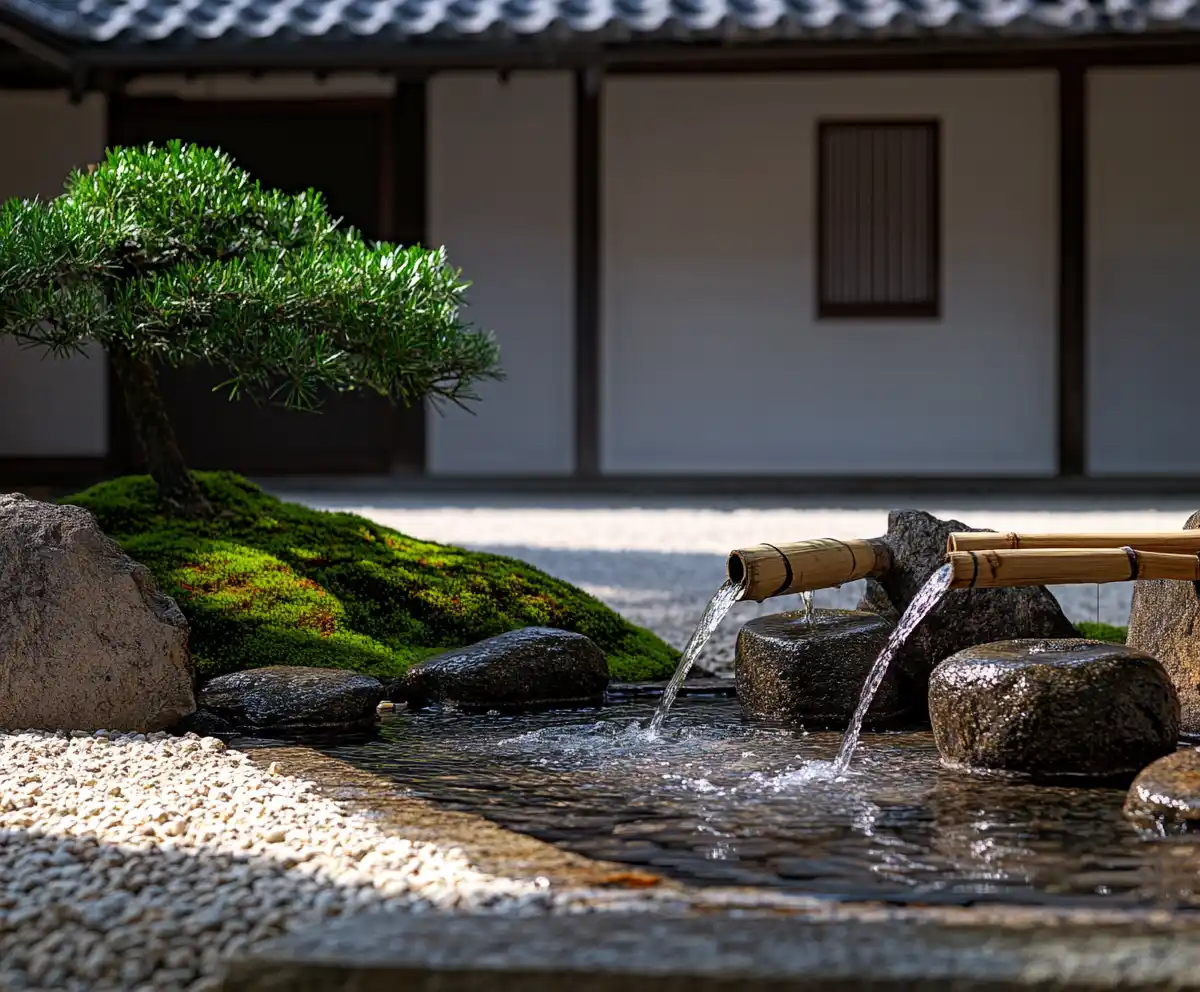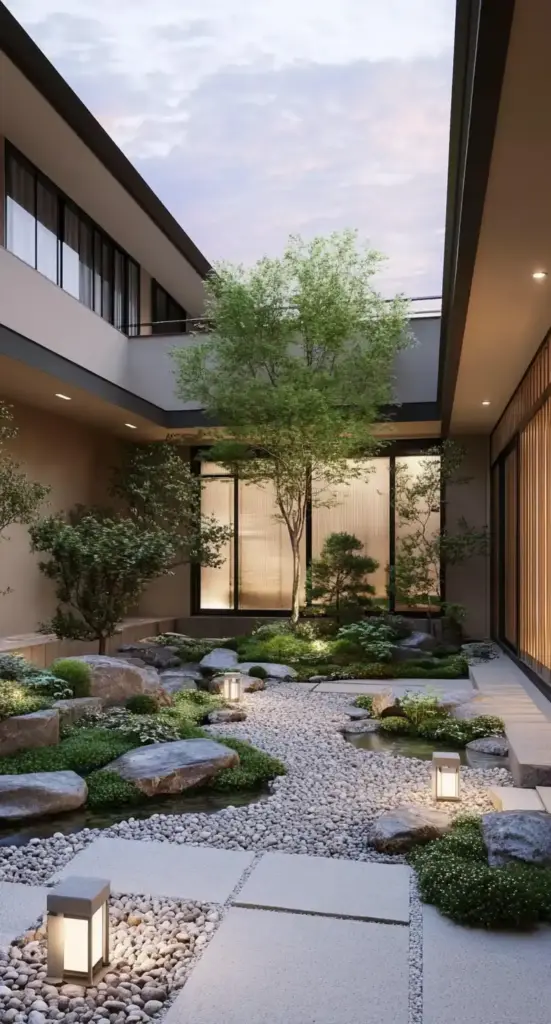Japanese garden design is more than just an approach to landscaping—it’s a profound philosophy that has evolved over centuries, rooted in spiritual symbolism and deep harmony with the natural world. At the heart of Japanese garden design is the principle of wabi-sabi, which honors the beauty found in imperfection, impermanence, and the subtle rhythms of life.
Unlike more formal Western garden styles that often emphasize symmetry and rigid structure, Japanese garden design embraces asymmetry and metaphor. Each moss-draped stone, gracefully arching tree, and delicately raked gravel bed contributes to a landscape that fosters reflection and calm. These gardens aren’t just visual spaces—they’re emotional experiences.
Heavily influenced by Shinto, Buddhist, and Taoist principles, Japanese gardens are designed to be both symbolic and deeply personal. Whether you’re designing a tranquil retreat in a large estate or a serene nook in a small urban yard, the timeless allure of Japanese garden design can be applied in any setting. For smaller spaces, these small yard landscaping ideas offer inspiration for maintaining a sense of balance and intimacy. You might also explore how low-maintenance perennials can complement your garden’s structure while preserving its meditative spirit.
Table of Contents
🌿 Key Design Concepts in Japanese Garden Design
The heart of Japanese garden design lies in its subtlety. Rather than bold, ornate features, it favors natural materials, irregular forms, and thoughtful symbolism. Here’s a breakdown of the core concepts that define this timeless aesthetic:
🌱 1. Natural Asymmetry
Japanese gardens intentionally avoid perfect symmetry. Instead, they mimic nature’s irregular beauty—placing stones, trees, and features in asymmetrical balance. This creates visual tension and curiosity, encouraging the eye to wander slowly across the landscape.
- Use uneven numbers in stone arrangements (3, 5, or 7)
- Offset focal points like lanterns or water features
- Balance a large element on one side with multiple smaller ones on the other
🪨 2. Symbolism Through Natural Elements
In Japanese garden design, every feature carries meaning. Stones might represent mountains or islands, while gravel patterns simulate flowing rivers. Symbolism transforms simple materials into metaphors that invite reflection.
- Rocks = Mountains or spiritual anchors
- Gravel or sand = Water or waves
- Bridges = Life’s transitions
- Paths = The journey of the soul
These metaphors turn a garden into a story.
🌸 3. Shizen: Harmony with Nature
Shizen (自然) refers to the organic integration of a garden into its surroundings. Authentic Japanese garden design blends seamlessly with the local environment, often using native plants and natural materials like weathered stone, bamboo, and earth-toned wood.
Designers aim for effortless elegance—nothing should feel forced or artificial. Even pruning is done to guide, not control, the shape of plants.
- Embrace the existing slope, wind, and sunlight
- Use native or climate-adapted plants for sustainability
- Let aging materials (moss, patina, rough textures) add character over time
🗺 Garden Layout Planning: Shaping Space with Purpose
A beautiful Japanese garden design doesn’t begin with plants or stones—it begins with observation. Before lifting a single rake or shovel, spend time studying your space. Understanding your yard’s natural features is key to creating a garden that feels timeless, effortless, and aligned with nature’s rhythm.
🔍 Step 1: Observe Before You Build
Take a week to quietly observe your space at different times of day. Where does sunlight linger? Where does rain collect? Do trees cast shade or wind move in a certain direction?
- Mark out shady and sunny zones
- Notice existing slopes or low areas
- Identify views to highlight or block
This observational phase ensures your design flows with your land, not against it.
🧭 Step 2: Create Three Functional Zones
A well-structured Japanese garden design includes distinct zones that work together to create a sensory journey.
- Active Zone: Areas for gatherings or tea ceremonies, such as a deck, bench, or small pavilion
- Transitional Zone: Winding paths with plants that soften edges, encouraging slow movement
- Contemplative Zone: A quiet retreat with a stone bench, water basin, or Zen garden for meditation
These zones allow the garden to be both interactive and introspective.
🪜 Step 3: Guide with Pathways
Pathways in Japanese gardens are never straight. They guide you intentionally—slowing your pace and deepening mindfulness.
- Tobi-ishi: Irregular stepping stones that invite careful walking
- Nobedan: Flat stone paths for transitions between features
- Yatsuhashi: Zigzag wooden bridges over water features, symbolizing life’s twists and turns
Use materials like slate, gravel, or reclaimed stone to maintain an earthy, natural feel.
💧 Step 4: Integrate Water Wisely
Water—real or symbolic—is a core element of Japanese gardens. It represents purity, renewal, and flow.
- Ponds: Home to koi and lotus, surrounded by irises or willows
- Streams: Small channels with natural stones create gentle movement
- Dry Riverbeds: Raked gravel mimics flowing water around strategically placed stones
Even a simple ripple or trickle can transform the ambiance.
🌲 Step 5: Layer Plants Like a Forest
Planting in layers mimics natural woodland structure and creates depth.
- Canopy Layer: Japanese maple, pine, or cherry trees for structure and shade
- Mid-Layer: Azaleas, camellias, and bamboo provide color and shape
- Ground Cover: Moss, mondo grass, or creeping thyme soften hard edges
🪴 Pro Tip: Follow the 70/30 rule—use 70% evergreen plants for year-round structure, and 30% seasonal plants for fleeting beauty like spring blossoms or fall color.
🏡 Small-Space Design Tips: Big Tranquility in Tiny Yards
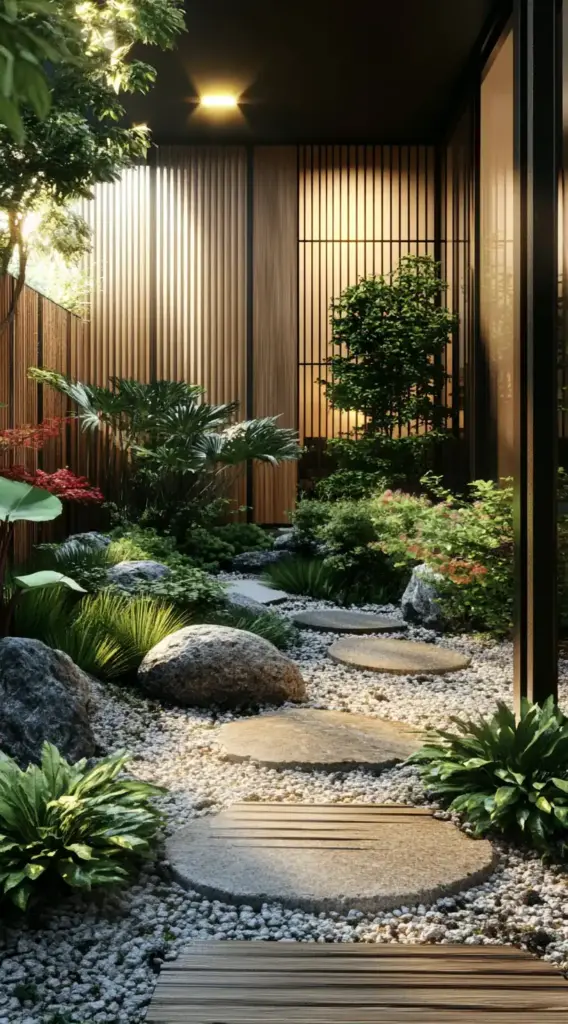
You don’t need a sprawling landscape to embrace the art of Japanese garden design. In fact, small backyards offer a unique opportunity to distill the philosophy down to its purest form—mindfulness, subtle detail, and efficient use of space.
🧱 1. Go Vertical: Use Walls and Fences Creatively
When horizontal space is limited, look up. Vertical gardening is a smart and beautiful way to expand your garden’s impact without crowding the ground.
- Living Walls: Use trellises or wire grids on fences to support climbing plants like chocolate vine (Akebia) or hydrangea vines.
- Mounted Moss Panels: Attach reclaimed wood panels and cultivate sheet moss for lush, green texture.
- Suspended Planters: Hang air plants or potted bonsai from pergolas or overhangs to create layered visual interest.
Vertical elements draw the eye upward, making the garden feel taller and more spacious.
🪞 2. Create Illusions of Depth
A hallmark of Japanese garden design is its ability to make small spaces feel expansive through smart visual tricks.
- Mirrors: Strategically place aged or frameless mirrors behind plants to reflect greenery and light. Hide edges with bamboo or foliage.
- Forced Perspective: Place larger plants or rocks in the foreground, and smaller elements in the distance to simulate depth.
- Curved Paths: Design meandering stone paths that lead behind screens or shrubs, suggesting there’s more garden just beyond view.
These design strategies encourage exploration and imagination.
💧 3. Choose Compact Water Features
Even the tiniest garden can include water—a symbol of renewal in Japanese culture.
- Tabletop Tsukubai: A shallow stone basin with a bamboo spout (kakei), often paired with a hidden pump for recirculating water.
- Wall-Mounted Fountains: Install a copper or bamboo water channel against a wall, trickling into a bed of gravel below.
- Reflective Dishes: Use wide ceramic bowls as miniature ponds. Float a leaf, a flower, or a single stone for elegance.
These features add calming sound and motion without taking up much room.
🌿 4. Choose the Right Plants for Small Gardens
Opt for plants that are slow-growing, compact, and visually interesting all year long.
- Dwarf Conifers: Try Pinus densiflora ‘Umbraculifera’, which grows into a sculptural, umbrella shape
- Grasses: Hakonechloa macra (Japanese forest grass) adds soft, cascading movement
- Moss Alternatives: In dry areas, use Dymondia margaretae or low-growing sedums to mimic moss texture
🪴 Pro Tip: Container gardening allows you to experiment without permanent commitments—ideal for patios or rented spaces.
🧱 Key Garden Features to Include in Japanese Garden Design
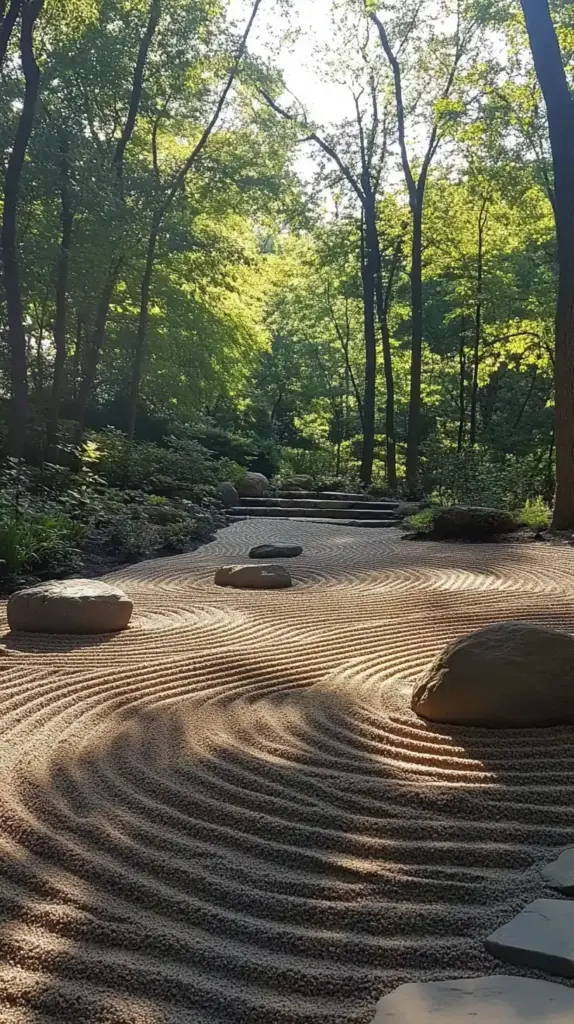
Thoughtfully chosen features are what transform a simple backyard into a tranquil, symbolic retreat. Every element in a Japanese garden design serves a purpose—inviting reflection, honoring nature, and enhancing flow. Here are the essential features to include:
🏮 1. Stone Lanterns (Tōrō)
Originally used to light the path to tea houses, stone lanterns are now symbolic beacons of peace and tradition.
- Use them to mark transitions between garden zones
- Place near a path, water feature, or under a tree canopy
- Choose weathered or moss-covered lanterns for a sense of age and history
🔦 Tip: Light them subtly with LED candles or solar-powered lights to preserve ambiance at night.
🎍 2. Bamboo Fences (Takegaki)
Bamboo adds structure while maintaining a light, natural look. It serves both functional and aesthetic purposes.
- Privacy: Use split bamboo panels or low fences to define areas
- Framing: Highlight focal points like a stone basin or maple tree
- Backdrops: Hide less attractive boundaries like concrete walls or sheds
🎋 Design Note: Let the imperfections of bamboo—knots, bends, texture—add character. That’s wabi-sabi in action.
🪣 3. Tsukubai: Ritual Water Basins
Tsukubai (蹲踞) are stone basins traditionally used for hand-washing before a tea ceremony. Today, they offer quiet moments of ritual and reflection.
- Surround with flat stepping stones and a bamboo dipper
- Position near a seating area or in a shaded corner
- Use a small pump to keep the water gently recirculating
💧 Bonus: The sound of dripping water helps mask street noise and enhances the garden’s sensory experience.
🧘♂️ 4. Karesansui: Zen Gravel Gardens
These dry landscapes are often the soul of a meditative garden. Raked gravel symbolizes water, while stones represent islands, animals, or mountains.
- Use raked gravel in tight areas as a minimalist focal point
- Keep patterns simple: concentric circles for islands, waves for streams
- Refresh patterns weekly as a mindfulness ritual
🪨 Zen Tip: Group stones in odd numbers (3, 5, or 7) and avoid linear alignment—natural randomness enhances spiritual symbolism.
🏯 Japanese Garden Styles & Inspiration: Find Your Aesthetic
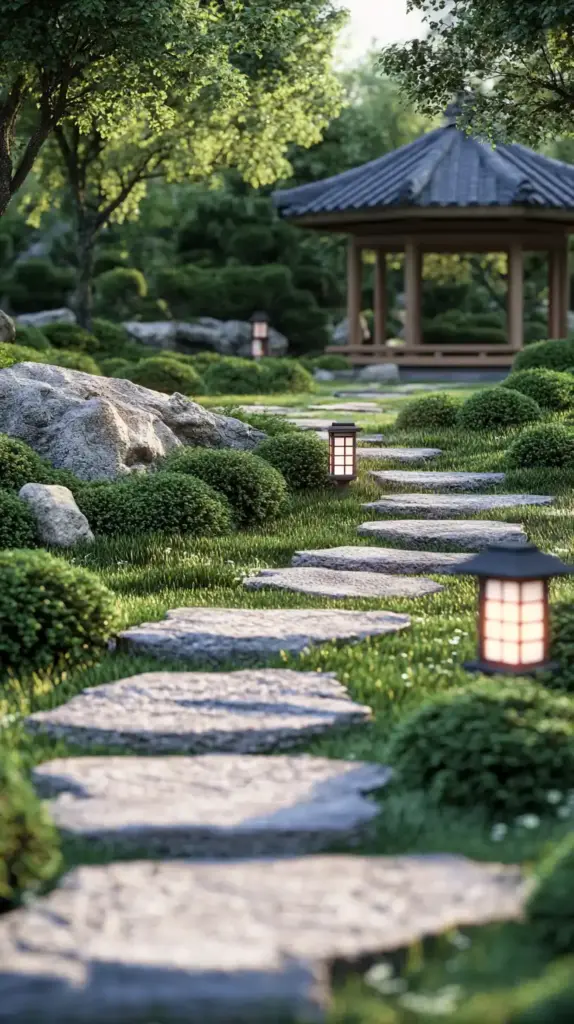
While all Japanese garden design draws from shared philosophical roots, there are distinct styles—each with its own character, history, and emotional tone. Whether you’re drawn to ritual, movement, or stillness, there’s a design for you.
🍵 1. Tea Gardens (Chaniwa)
Purpose: These gardens were created to set the tone for the Japanese tea ceremony, emphasizing simplicity, humility, and spiritual transition.
Key Elements:
- Roji (Dew Path): A stepping stone trail leading guests away from the everyday world
- Tsukubai: Stone basin for ritual purification before the ceremony
- Low Shrubs & Evergreens: Camellias, pines, and bamboo evoke quiet, shady forest paths
💡 Modern Tip: Substitute the tea house with a shaded bench or meditation pavilion for daily reflection.
🚶♀️ 2. Stroll Gardens (Kaiyū-shiki-teien)
Purpose: These large, immersive gardens are designed for walking and discovery. Each turn reveals a new scene or perspective.
Key Elements:
- Circular Paths: Guide visitors past ponds, bridges, and groves
- Vistas: Frame views with foliage or elevation to create “scenes”
- Seasonal Drama: Sakura for spring, hydrangea for summer, maple for fall
🌸 Design Idea: Create a mini version in your yard with a looping path and focal points like a lantern or dry stream.
🏙 3. Courtyard Gardens (Tsubo-niwa)
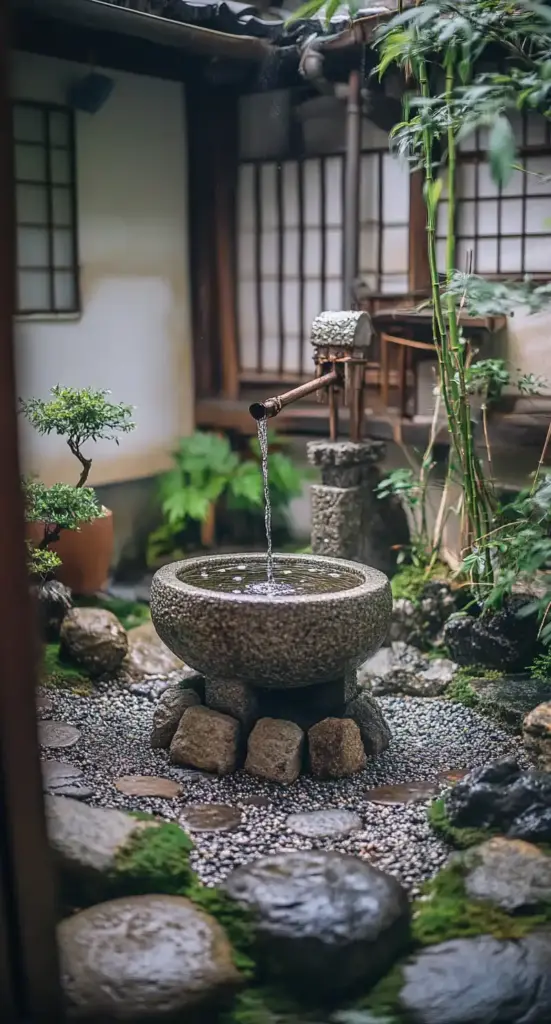
Purpose: Born from compact urban living, these gardens use minimal space for maximum effect—perfect for small patios or apartment balconies.
Key Elements:
- Vertical Greenery: Bamboo screens with climbing plants
- Shishi-odoshi: Bamboo water features that create rhythm and mask city noise
- Minimal Layout: A few carefully chosen stones or bonsai can evoke a full landscape
🏡 Pro Tip: Use potted plants and stone accents to recreate this feel on a balcony or rooftop.
🧘♂️ 4. Zen Meditation Gardens (Karesansui)
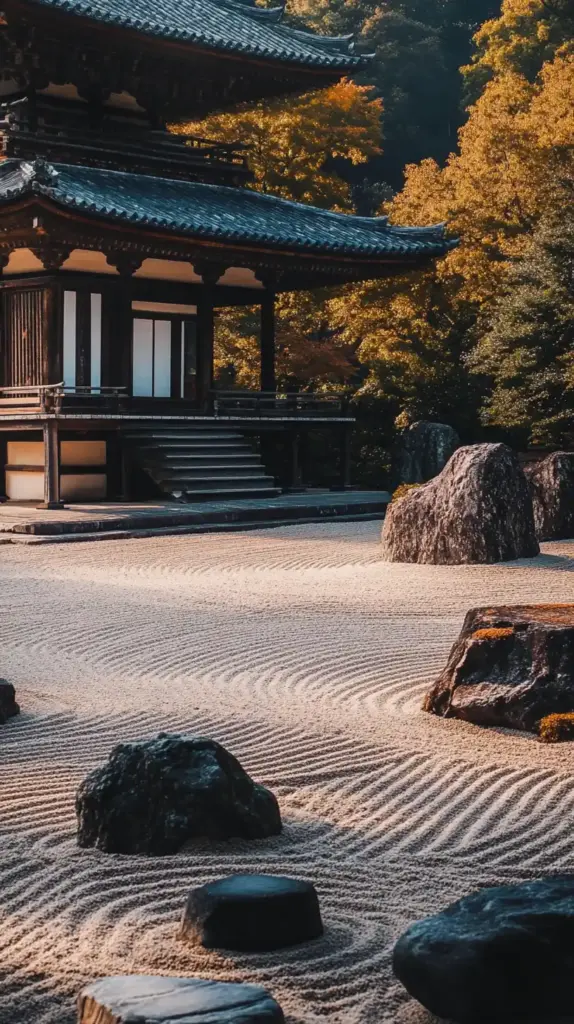
Purpose: These gardens are designed for contemplation. They use abstraction to convey vast natural scenes using minimal materials.
Key Elements:
- Raked Gravel: Mimics rippling water around boulders
- Stone Groupings: Represent mountains, animals, or islands
- Shakkei (Borrowed Scenery): Incorporate a distant tree or hill to expand the perceived space
🖤 Low-Maintenance Bonus: Zen gardens require no irrigation or pruning—just regular raking.
🆕 5. Modern Fusion Gardens
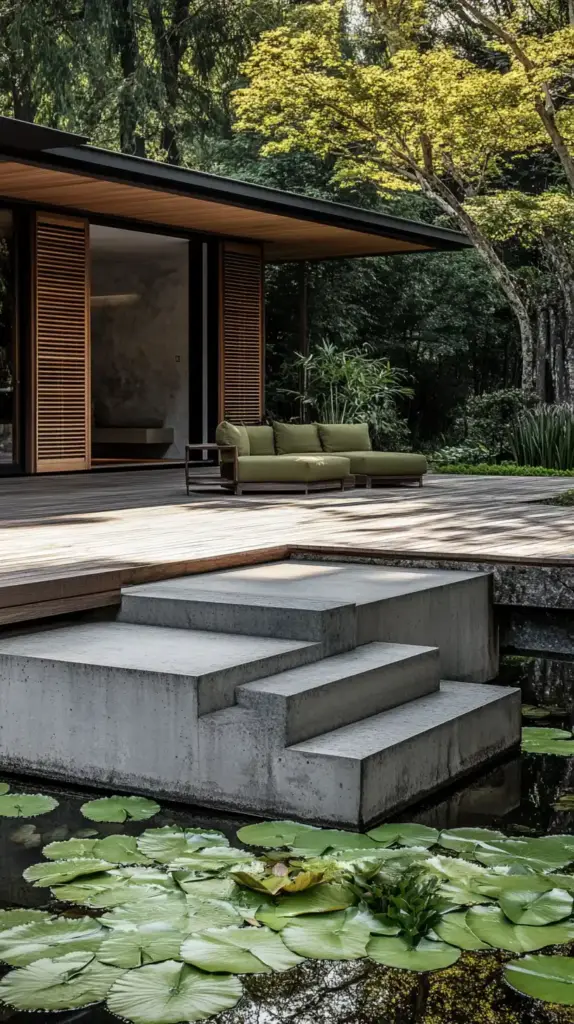
Purpose: These blend traditional Japanese garden design with modern materials and tech—ideal for contemporary homes.
Key Elements:
- Concrete & Steel: Raised planters or minimalist benches
- LED Path Lighting: Hidden strips or lantern-style fixtures
- Native Plants: Pair traditional elements with local species for easier upkeep
⚙️ Fusion Concept: Frame a traditional stone basin with corten steel edging and low-voltage lighting for a timeless-meets-modern effect.
🧰 DIY Tips and Tutorials: Crafting Your Own Japanese Garden
Creating a serene space through Japanese garden design can be deeply satisfying and surprisingly doable. Whether you’re building a koi pond or assembling a bamboo fence, here’s how to start transforming your outdoor space with purpose and peace.
🌿 Step 1: Choosing the Right Plants
Your plant palette should reflect your region while echoing the style and spirit of traditional Japanese gardens.
For Cooler Climates:
- Replace cherry trees with Amur maple (Acer ginnala) for brilliant fall color
- Choose hardy evergreens like spruce or boxwood pruned into organic forms
For Dry or Warm Regions:
- Try Heavenly bamboo (Nandina domestica) as a drought-tolerant alternative
- Use native grasses or low-water shrubs like California lilac or manzanita
🪴 Starter Plant Picks:
- Shade: Hostas, Japanese painted fern, moss
- Sun: Iris, sedges, Hakonechloa (Japanese forest grass)
📍 Tip: Source plants from local native nurseries—they’ll establish faster and need less water or care.
⛩ Step 2: Building a Dry Landscape (Karesansui)
A Zen-style dry garden is ideal for peaceful meditation and minimal upkeep.
Materials Needed:
- Coarse sand or crushed granite (2–3” deep)
- Weathered stones (basalt or limestone)
- Optional: metal or wood edging
Instructions:
- Lay landscape fabric to prevent weed growth
- Add sand or gravel and level the surface
- Position stones using the “triangle rule” (avoid straight lines or symmetry)
- Rake simple wave or ripple patterns using a wide-toothed wooden rake
🧘♂️ Zen Tip: Rake patterns weekly as a calming ritual—this isn’t maintenance, it’s mindfulness.
🎍 Step 3: Installing a Bamboo Fence
Bamboo fences (takegaki) are iconic in Japanese gardens—functional, beautiful, and surprisingly DIY-friendly.
Materials:
- Bamboo poles (1–2” diameter)
- Wooden posts (4×4 treated lumber)
- Copper wire or natural jute rope
- Quick-set concrete
Steps:
- Set posts 6 feet apart in concrete
- Soak bamboo in water (48 hrs) to make it flexible
- Weave horizontal and vertical bamboo, securing with copper wire or lashing
- Apply linseed oil to seal and preserve the bamboo
🎋 Tip: Let the natural color fade to a weathered gray for a more authentic look.
🪨 Step 4: Creating a Stepping Stone Path
Paths guide visitors through your space—and slow their pace.
Materials:
- Irregular flagstones or stepping stones
- Sand and gravel base
- Moss or low ground cover
Instructions:
- Space stones 6–8 inches apart to encourage mindful walking
- Dig down 2–3 inches and level with sand
- Set stones slightly tilted for drainage
- Plant moss or creeping thyme between gaps for softness
🧭 Pro Tip: Slightly offset each step so the path feels natural, not manufactured.
🐟 Step 5: Building a Mini Koi Pond
Even small gardens can host koi with the right setup.
Affordable Option:
- Use a preformed polyethylene pond liner (50–100 gallons)
- Install a submersible pump and filter
- Edge with flat stones and aquatic plants
Key Tips:
- Partial shade helps prevent algae
- Start with 2–3 small koi and include plants like water lettuce or Iris pseudacorus
- Budget: ~$300 for a basic 75-gallon setup
💧 Optional Upgrade: Add a solar-powered pump and LED uplighting for nighttime ambiance.
🌍 Real-Life Examples: Global Inspiration Meets Local Execution
Studying actual examples of Japanese garden design helps turn ideas into action. Whether it’s a centuries-old Zen temple or a small city patio, these gardens demonstrate how deeply thoughtful design can thrive in any space.
🏯 Iconic Japanese Gardens Around the World
1. Ryoan-ji Temple (Kyoto, Japan)
- Design Highlight: The ultimate example of a Zen gravel garden, Ryoan-ji features 15 rocks arranged in such a way that only 14 are visible from any angle.
- Why It Works: The simplicity and abstraction engage the viewer’s imagination. The design embodies mu (emptiness), encouraging introspection.
2. Kenroku-en (Kanazawa, Japan)
- Design Highlight: One of Japan’s “Three Great Gardens,” Kenroku-en balances six ideal qualities: spaciousness, seclusion, antiquity, waterways, views, and artistry.
- Why It Works: Seasonal beauty—from cherry blossoms to snow-laced pines—makes it timeless. Traditional teahouses frame perfect garden views.
3. Portland Japanese Garden (Oregon, USA)
- Design Highlight: A showcase of authentic Japanese principles applied to Pacific Northwest flora. Includes a Strolling Pond Garden, mossy paths, and native trees.
- Why It Works: Demonstrates that Japanese garden design can embrace local plants while preserving cultural integrity.
4. Adachi Museum Garden (Shimane, Japan)
- Design Highlight: Famous for its use of shakkei (borrowed scenery) to blend distant mountain views into the garden’s composition.
- Why It Works: Combines minimal intervention with visual harmony, showing how perception can shape experience.
🏡 Homeowner Case Studies
🏙 Case Study 1: Urban Rooftop Retreat (Tokyo, Japan)
- Challenge: A 200-square-foot rooftop with strong wind and weight limitations.
- Solution:
- Vertical trellises with akebia vines for greenery
- A painted dry stream mimicking gravel rivers
- A stainless steel tsukubai with solar-powered recirculation
- Result: A serene, low-maintenance escape amid the city skyline.
🌞 Case Study 2: California Suburban Fusion (USA)
- Challenge: A 1,500-square-foot backyard dominated by invasive ivy and uneven slopes.
- Solution:
- Tiered garden beds with reclaimed sandstone
- A preformed koi pond lined with butterfly koi and aquatic irises
- Plant blend of Japanese maples, azaleas, and native sedges
- Result: A drought-tolerant garden that balances Kyoto-inspired aesthetics with California ecology.
These examples prove that Japanese garden design isn’t bound by geography—it’s guided by intent. Whether your space is a balcony or a backyard, it can become a sacred place of reflection, crafted one stone and one plant at a time.
🛠 Maintenance Tips: Nurturing Tranquility Over Time

A well-designed Japanese garden isn’t just built—it’s cultivated. Its beauty unfolds slowly, deepening with age. Regular, intentional upkeep not only preserves its appearance but strengthens your personal connection to the space.
🍃 Seasonal Care Guide
🌸 Spring
- Prune pines, azaleas, and maples to enhance their natural form (avoid over-shaping)
- Clean moss and stones with a soft broom—don’t use chemicals
- Refresh gravel or sand in Zen gardens, rake new ripple or wave patterns
- Service water features: clean filters, top off basins, check pumps
☀️ Summer
- Water deeply in the early morning, especially for moss and ferns
- Control pests: Use neem oil or introduce ladybugs to manage aphids
- Rake weekly to maintain gravel designs and mindfulness habits
🍂 Autumn
- Net ponds to catch falling leaves
- Mulch beds with shredded leaves or pine needles to protect roots
- Trim lightly—leave most pruning until late winter to preserve fall color
❄️ Winter
- Protect delicate plants like Acer palmatum with burlap wraps
- Brush off snow from bamboo fences and stone lanterns to prevent damage
- Maintain tools: Sharpen shears, oil wooden rakes and handles
🧘♂️ Mindful Note: Accept seasonal change as part of the garden’s rhythm. Even decay has beauty in wabi-sabi thinking.
🧪 Troubleshooting Common Issues
🟢 Algae in Ponds
- Fix: Add floating plants like water lettuce for shade
- Use a UV clarifier or barley straw to manage blooms naturally
🍂 Moss Browning
- Fix: Mist regularly with rainwater (avoid alkaline tap water)
- Check for too much sun exposure and relocate if needed
🎍 Bamboo Cracking
- Fix: Sand and seal cuts with wood glue; replace severely cracked pieces in spring
- Protect with oil and avoid extreme sun exposure
🧘♀️ Mindful Upkeep Practices
Daily Rituals:
- Spend 10 minutes observing, raking, or watering
- Focus your attention—this becomes moving meditation
Intentional Repairs:
- Highlight imperfections, don’t hide them
- A chipped lantern or leaning post can be enhanced with moss or lichen, honoring impermanence
Garden Journal:
- Record blooming times, wildlife sightings, weather impacts
- Over time, this builds a relationship between you and your space
👨👩👧 Family Tip: Involve loved ones in raking patterns or caring for koi—turn maintenance into a shared tradition.
🌸 Conclusion: A Living Work of Art
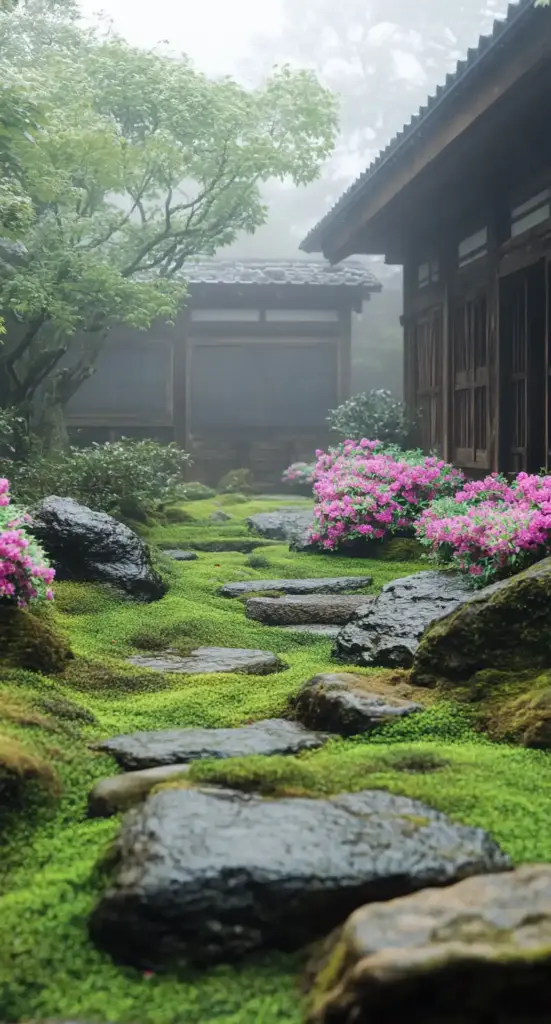
Japanese garden design is more than arranging stones and plants—it’s an intentional cultivation of peace, balance, and timeless beauty. These serene gardens evolve with you, becoming more meaningful as seasons shift. Each rake of gravel and each carefully pruned branch contributes to a living narrative of stillness and growth.
The beauty of Japanese garden design lies in its accessibility. You don’t need a vast estate or years of expertise. Begin with a single symbolic element—a stone basin, a Japanese maple, or a gently curved stepping path—and let your garden reflect your evolving sense of calm. For beginners, our small garden design tips are perfect for bringing traditional principles into a modest space.
By honoring tradition while expressing your personal style, your Japanese garden design becomes not just an outdoor project but a spiritual retreat. Enhance its structure with walkable ground cover or integrate low-maintenance perennials to ensure your sanctuary stays lush with minimal effort.
In the end, a thoughtfully created Japanese garden design is not simply a destination—it becomes a lifelong source of quiet joy and reflection.
🌿 Love gardening inspiration? Follow me on Pinterest for bold plant ideas, tips, and seasonal color!
More Posts
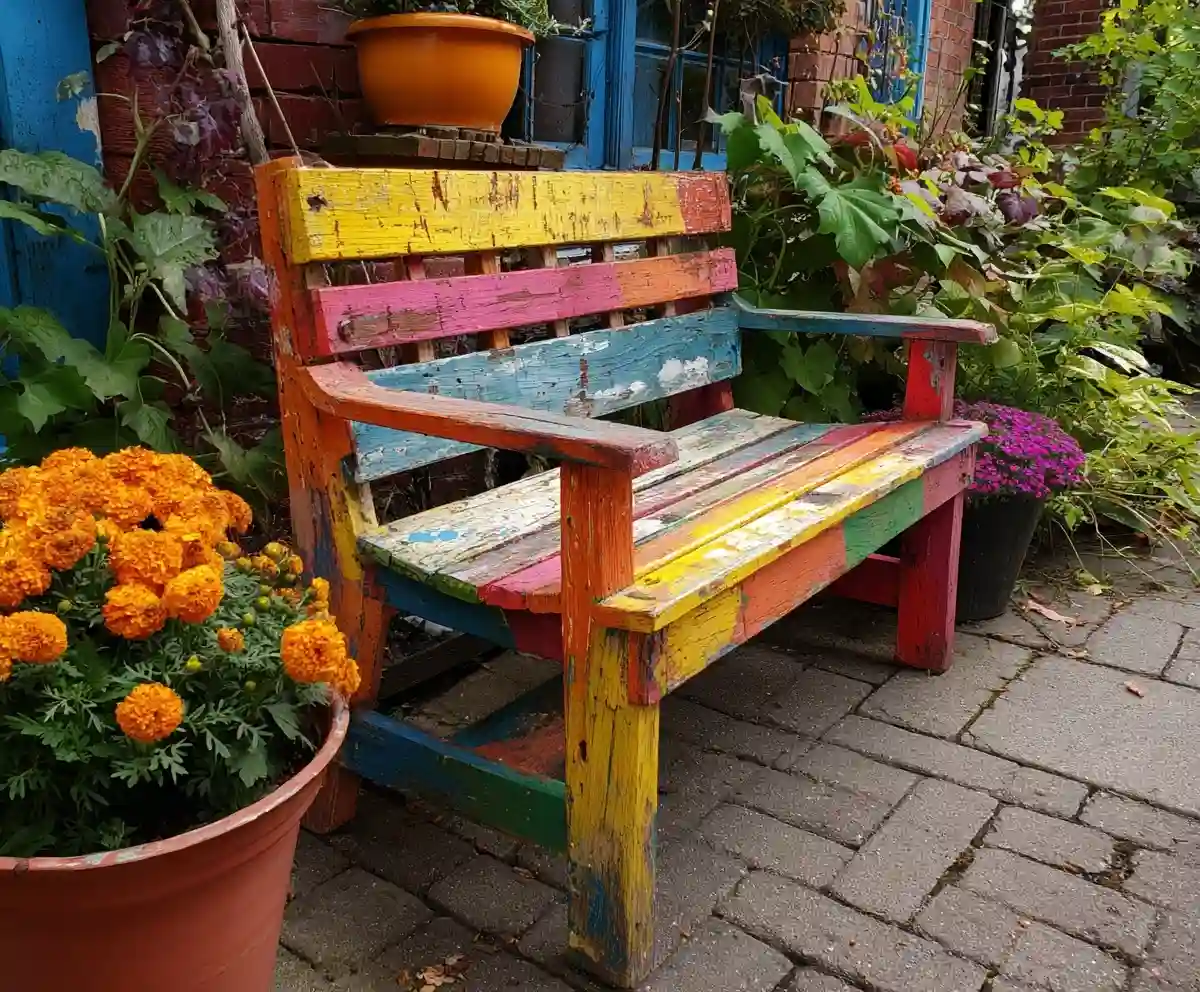
19+ Budget-Friendly Backyard Makeover Ideas
Backyard makeover ideas can turn even the most ordinary outdoor space into a warm, inviting retreat—without draining your wallet.
Read More →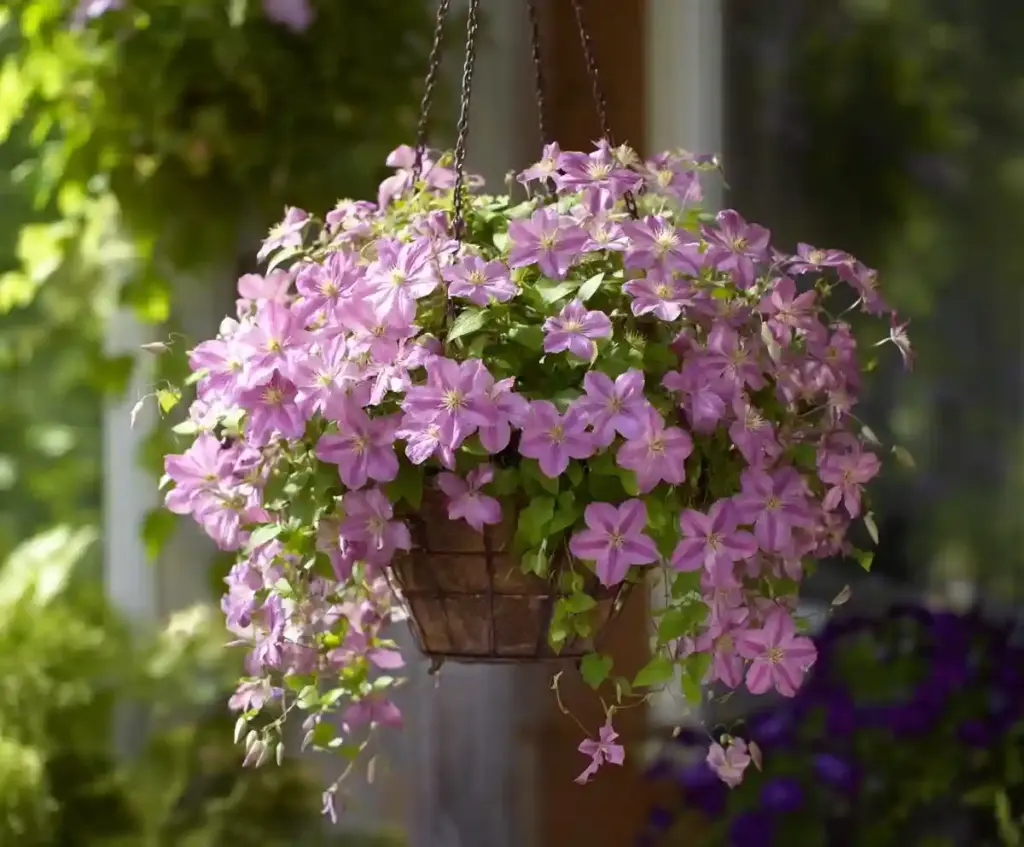
21 Stunning & Simple DIY Clematis Trellis Designs
DIY clematis trellis designs are a beautiful way to blend creativity with function in your garden.
Read More →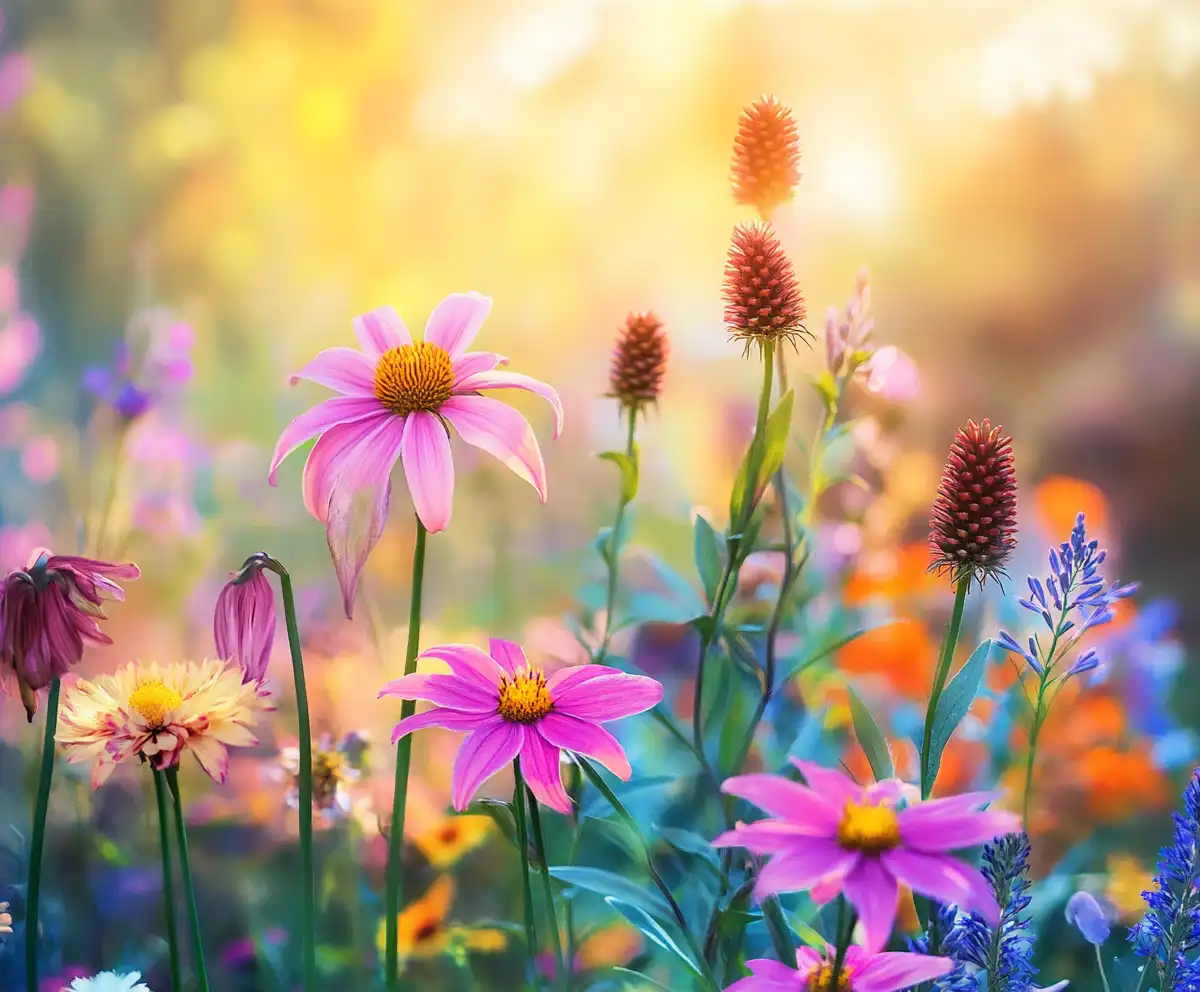
12 Full Sun Perennials That Bloom All Summer
Explore a selection of hardy perennials that flourish and bloom beautifully in full sun throughout the summer.
Read More →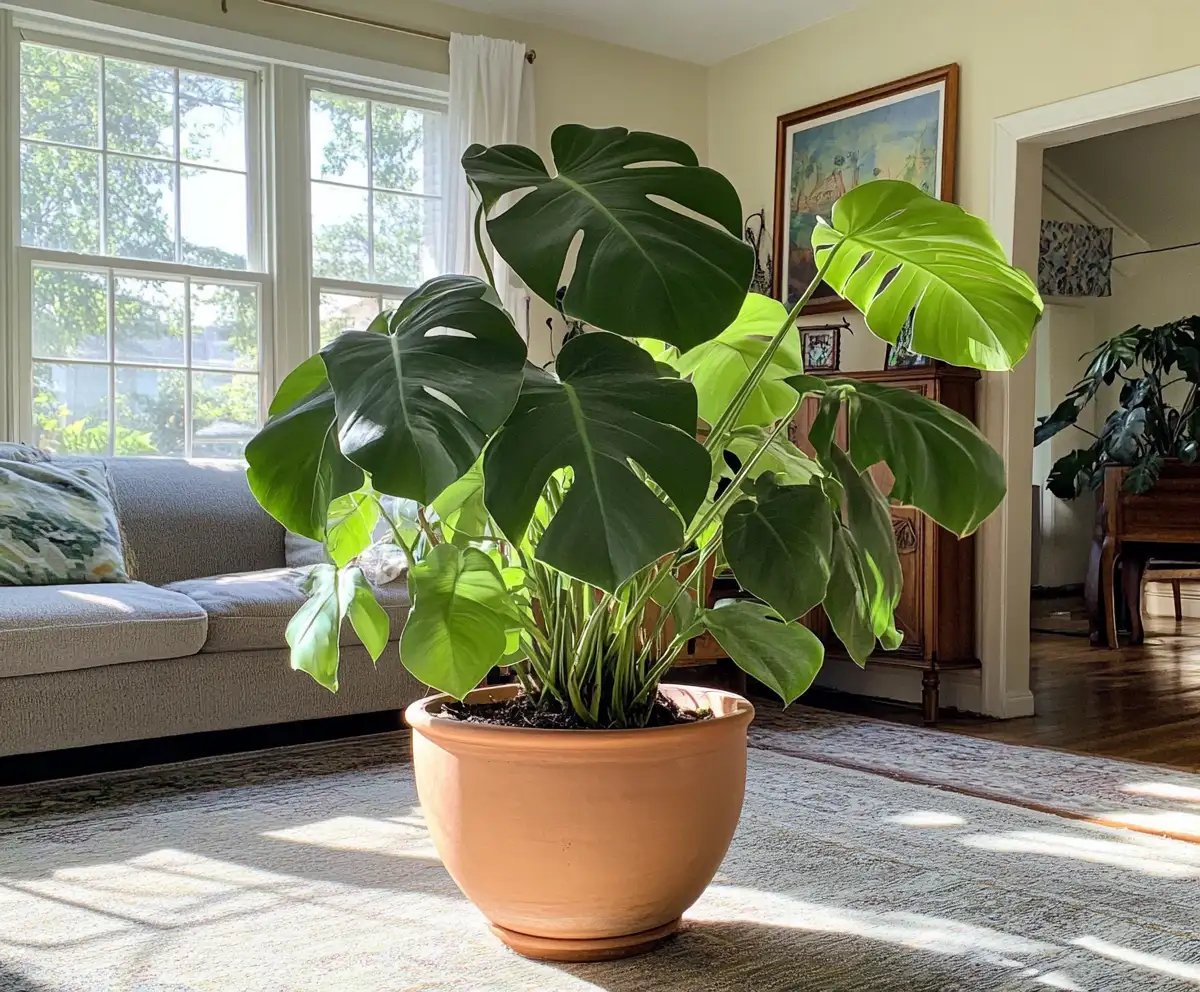
Houseplants for Living Room
Find the perfect houseplants to brighten and purify your living room while adding a touch of nature indoors.
Read More →
Backyard Play Area for Kids
Create a fun and safe backyard play area for kids with these inspiring design ideas and tips.
Read More →
Top Privacy Trees
Discover top tree varieties that provide natural privacy and enhance your outdoor space.
Read More →
